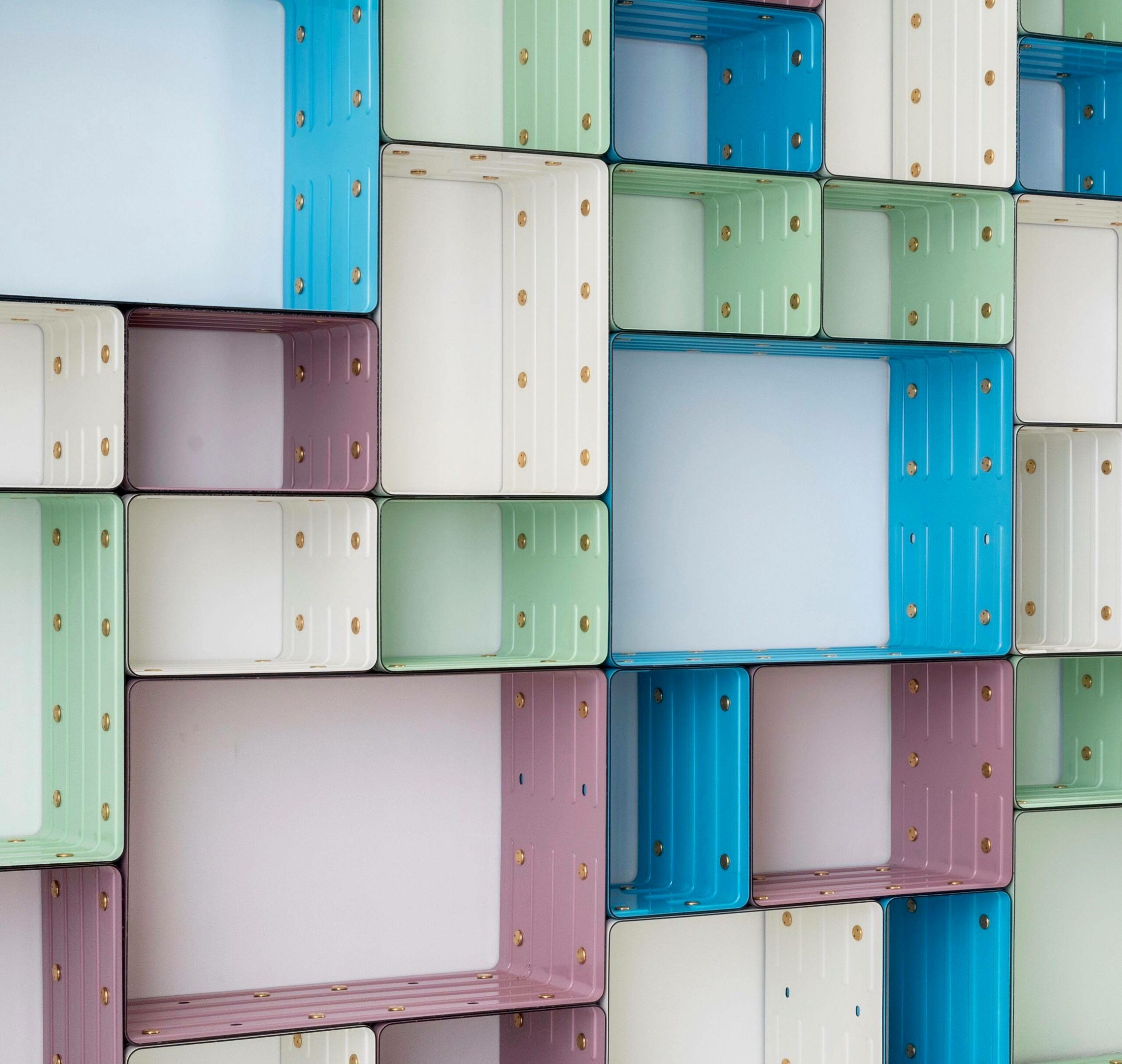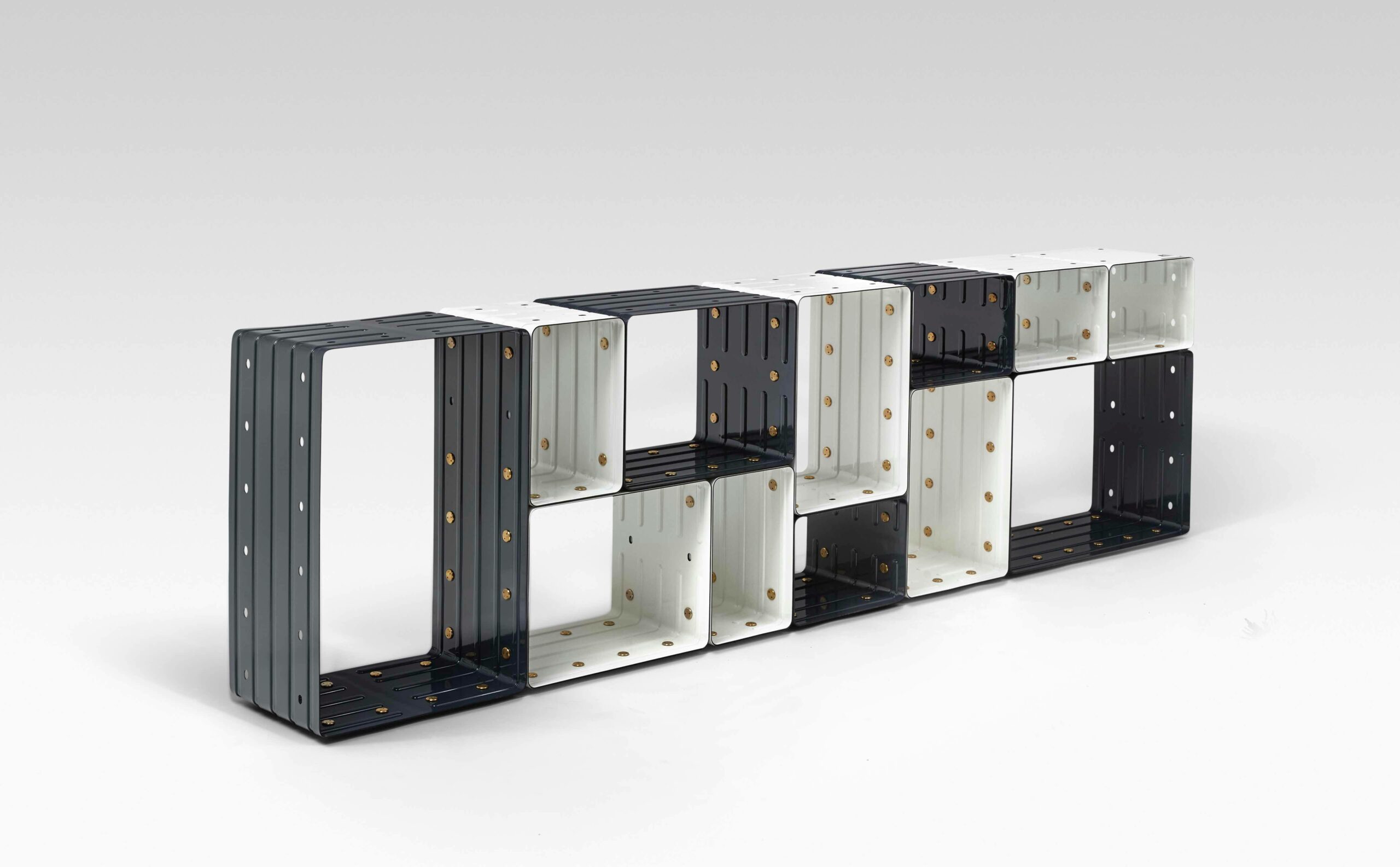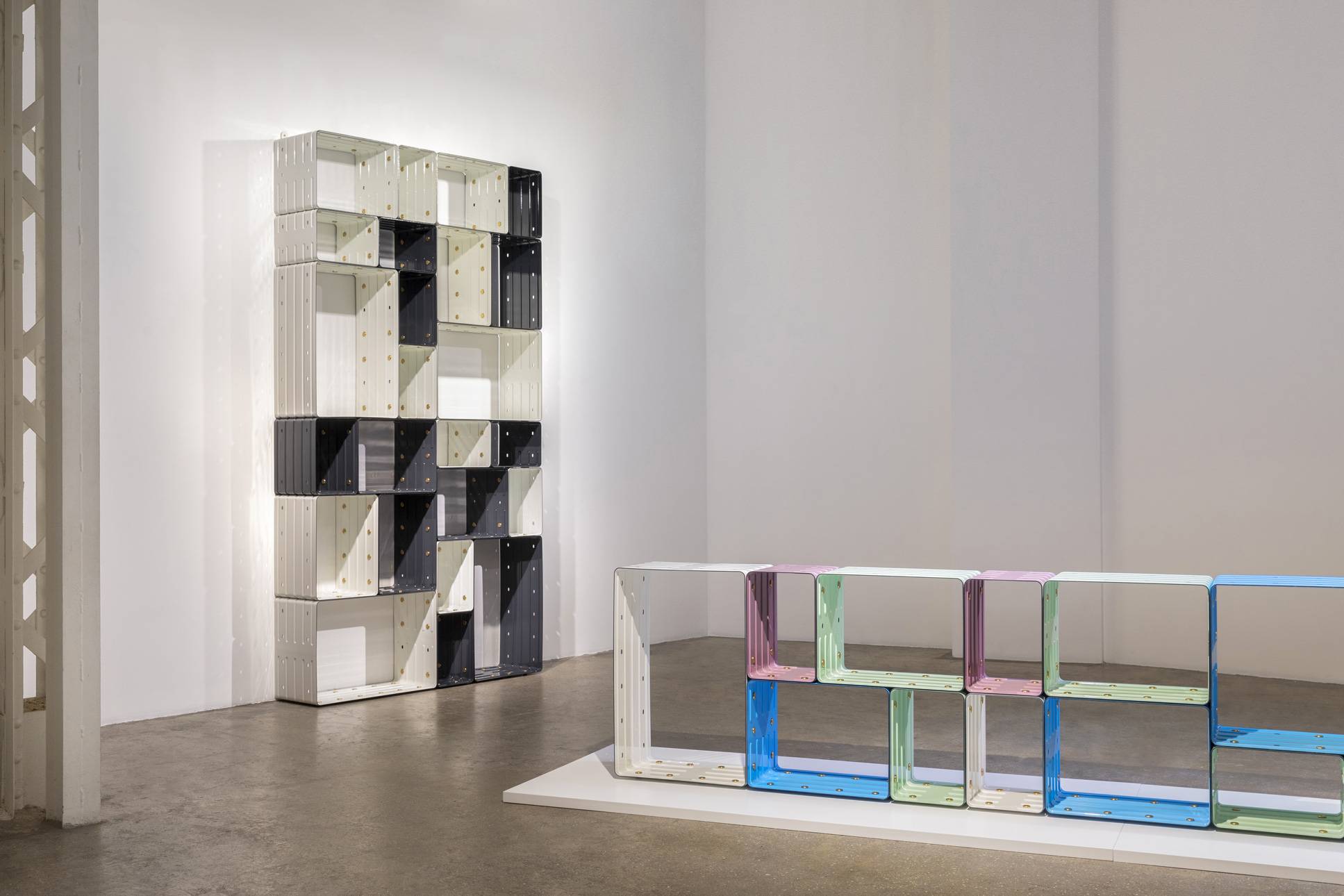
13
Meet Marc Newson: The star designer unveils his latest creation in Paris
The most famous designer, who notably participated in the creation of the Apple Watch, is presenting his new collection of Quobus modular shelves at the Galerie kreo until November 20. More than a library, a true work of art nourished by the themes dear to the creator : from the graphic line to the play between emptiness and fullness.
Published on October 13, 2021. Updated on May 31, 2024.
Numéro : While you’ve worked on almost every type of object, you’d strangely never imagined a library before 2015…
Marc Newson : I have lived most of my life as a student. All my belongings were gathered in suitcases that I dragged with me around the world. I had been thinking about the shelf object for a long time but, to tell the truth, I didn’t have an urgent need for it. And every project always starts with me. Not from a selfish perspective, but because I am a consumer like anyone else. To think about an object, I first need to feel the need to do so. The question I ask myself is always the same : how should I consume ? By this I mean not only how I want to spend my money, but above all how I want to behave – philosophically – as a consumer.
So why create a new object, a new shelf ?
The role of the designer is to allow the consumer to have a choice. That’s what I like about design, unlike architecture. Architecture imposes a permanent structure on you. The design piece, whether good or bad, gives you the choice. You can live with it or move it. There are always different versions that adjust to people’s tastes. Because taste is not something you can impose or standardize. As a designer, you can enrich this palette of choices. And, in my case, I hope to offer a choice of high standards. For example, I like objects that do not have a programmed lifespan and that will fit forever into your everyday landscape. I realize that few people can afford some of my work, but I hope it’s worth it. Does an object really need to be created ? The answer is often no. You have to be willing to say no often. Today, people have integrated that any object is accessible to them, because there is always a version of the object at a low price. This all-accessible poses a problem : these objects are not designed to last.


Nevertheless, you have also worked on more affordable objects…
Yes, the Apple Watch is the most produced watch in the world and in history. However, it remains expensive for many. But I like this idea of creating value, not in a monetary sense but in an emotional sense. You look at an object and it makes you happier. He speaks to you. It’s not a “poor” product dying in front of your eyes.
What has design done to you after so many years ?
He made me a very obsessive person. What interests me in design is not collecting objects or creating more and more, but learning more and more about materials and processes. This forms an accumulation of knowledge that allows me to do the things I want to do.
And what about those bookshelves made from modules ?
One day I put down my suitcases. And where I needed an object to put my things on (laughs). And Taschen Publishing also asked me to create a system for arranging their books. It was a more difficult problem than it seems. The publishing house has something like 5,000 books of different sizes, small, large, huge… It’s incredibly heavy. A wall of books can weigh up to 100 kg. I had to find a solution that was solid and that remained beautiful despite everything. I came up with this modular bookcase solution, capable of adapting to different configurations, like a construction set, depending on whether you choose to bring together one, two, four, eight… modules and to install them horizontally or vertically.

The Quobus shelves presented at the kreo gallery preserve this principle of modularity while offering a new and very different collection, made of enamel, with brass rivets. Noble materials that work to make the shelf an object in itself…
The choice of enamel represents a major challenge because there are perhaps only two factories, one in France and the other in Belgium, which are able to carry out the work required. Unlike a century ago, no one wants to use this special material anymore. It is actually glass. And the glass is very fragile. But I like enamel because its color doesn’t look anything like paint. A real alchemy is played out in the oven. You put blue in it and it becomes gray. The mauve becomes green.
Why did you limit the color palette of the shelves to 5 ?
I was instinctively attracted to these colors. And I like the quality that the enamel gives them: the colors are pastel… in reality, of a tone even more sophisticated than pastel. Black itself turns into coal. They have real depth.
From the front, the curves of the modules form like black lines, those of a drawing you have made with a felt-tip pen. The shelves disappear behind this minimalist line. As is often the case in your work, we find this idea of the visible and the invisible, of the interplay between full and empty, of the appearance and disappearance of the object…
I like the idea that the object is a presence, that it can exist in a room by itself. But also that it disappears when books or objects are placed on it. They then take the main place, and we lose a little of the library. It’s a quality in my opinion. I also like that the object changes your perception of space in this way. If you place the bookcase in the middle of the room, you create a transparency effect. There is no orientation, neither up nor down, nor good or bad. This also offers architectural possibilities. You could use it to separate a room. I like this idea of separating spaces with an object.
“Quobus” by Marc Newson, Galerie kreo, Paris. Until November 20, 2021.
A twin exhibition is also being held at the kreo gallery in London until November 20, 2021.
















